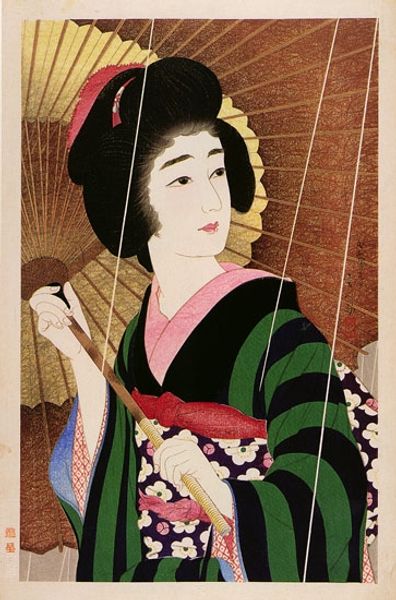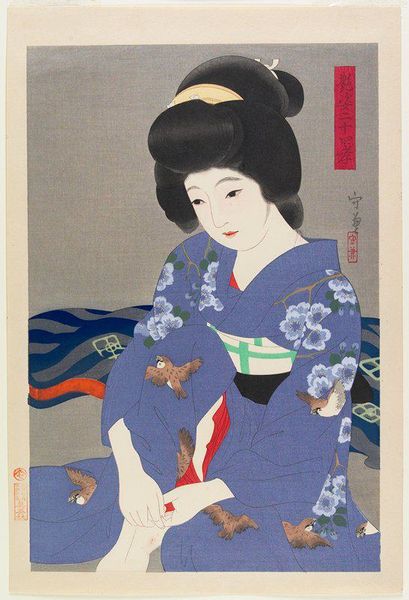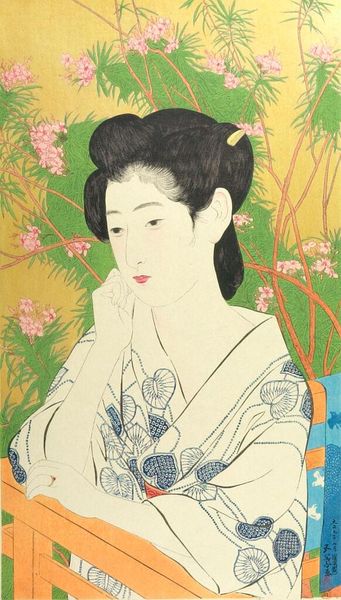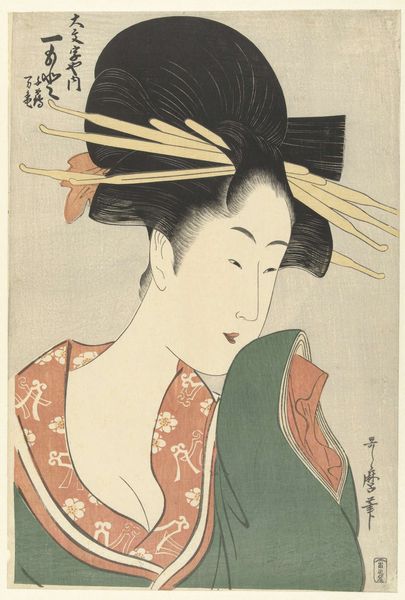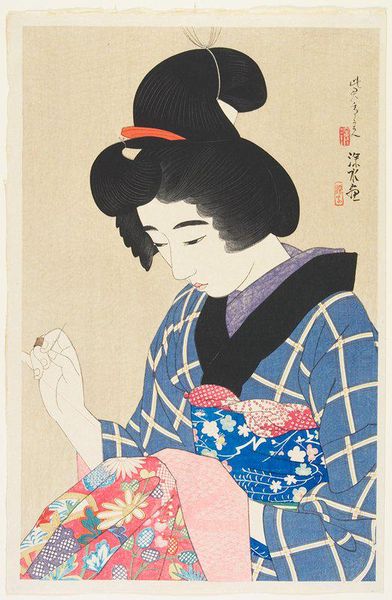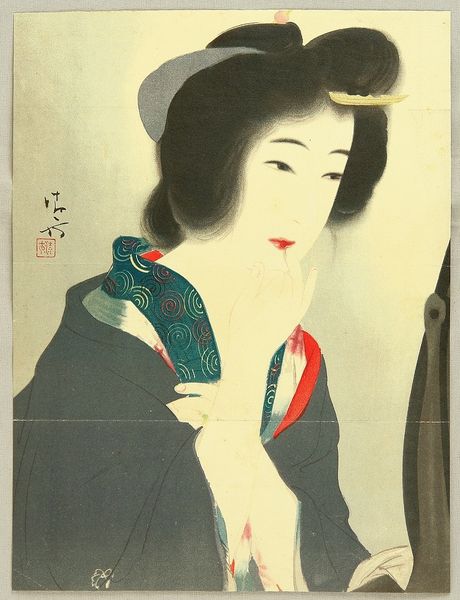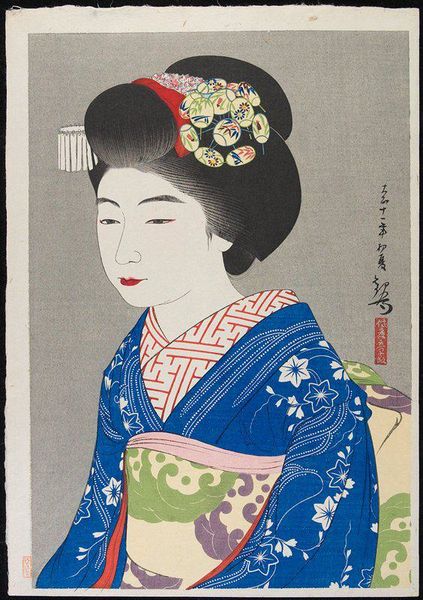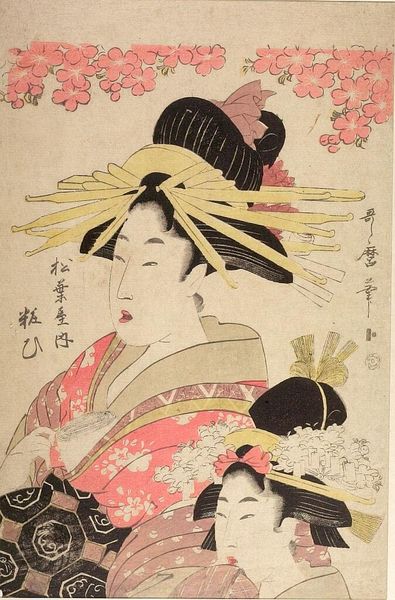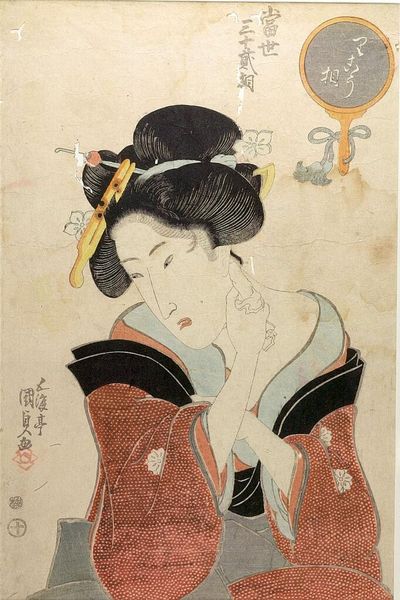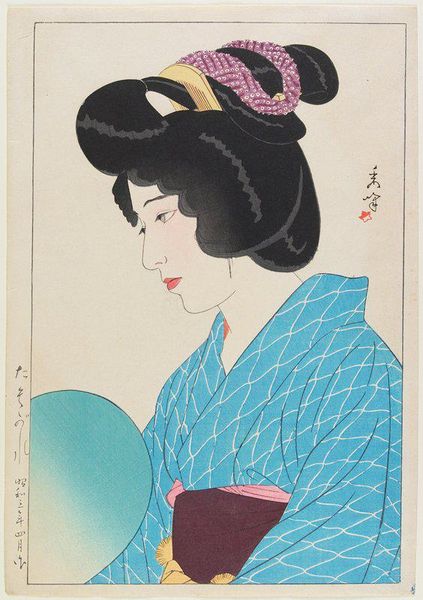
Copyright: Torii Kotondo,Fair Use
Curator: Here we see Torii Kotondo’s "After the Bath," a tempera print completed in 1933. I'm immediately drawn to the subject's contemplative pose and the composition’s muted tones. It evokes a certain mood, doesn't it? Editor: Absolutely. There is a delicate tranquility, but the intimacy makes me uneasy. The almost voyeuristic presentation echoes a long, often troubling, tradition of the female gaze filtered through male artistry. How can we frame her experience with sensitivity? Curator: Ukiyo-e traditions—the art of the floating world—are a key touchstone here, and the iconography speaks of ephemeral beauty. Her positioning against the parasol, combined with the steam of the bath represented through line work, almost canonizes her. This elevation points not just towards individual appeal, but idealized femininity. Editor: While respecting its historical art lineage, shouldn't we also ask how it perpetuates a singular standard of beauty? A very specific aesthetic ideal becomes culturally dominant, which excludes or diminishes many others. That backdrop is quite telling, symbolizing a world designed to shelter and circumscribe this figure. Curator: Indeed, but consider how Kotondo uses light to elevate her form. Notice the cool porcelain palette he chose for the face and neck. This contrasts with the geometric grid behind her, forming symbolic tension between personal reflection and the constructed social arena. Editor: The details invite reflection but can we really disconnect such aesthetics from power dynamics? She is carrying something – possibly towels, perhaps obscuring. Does she carry or conceal her autonomy as well, weighed by tradition or societal expectation, rather than literally items after a bath? What kind of narrative space are we giving for voices traditionally silenced? Curator: That reading encourages us to acknowledge layered narratives, and is absolutely welcome. But even with complex critiques in mind, I feel there's an undeniable reverence to the form of the female body displayed within this composition. Kotondo offers an image embedded within cultural symbolism, certainly, but he delivers a certain grace too. Editor: Acknowledging tradition shouldn’t prevent contemporary scrutiny of ingrained patriarchal structures. This piece challenges me to examine and question what I accept as beautiful, whose beauty is recognized, and what sociopolitical context is consistently woven into these preferences. Curator: Art acts as an archive; in each piece exist messages across time. Here, tradition finds intersection with how beauty is defined. Editor: Leaving us both responsible in how that art’s continued role affects, affirms or changes with our evolving culture.
Comments
No comments
Be the first to comment and join the conversation on the ultimate creative platform.
